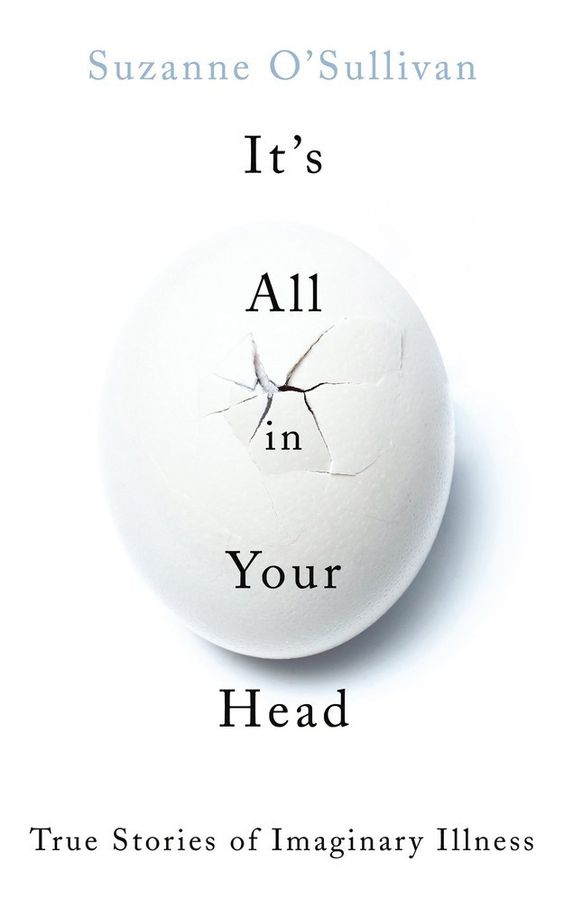What do you think?
Rate this book


326 pages, Hardcover
First published June 4, 2015


"...The word psychosomatic refers to physical symptoms that occur for psychological reasons. Tears and blushing are examples of this, but they are normal responses that do not represent illness. It is only when psychosomatic symptoms go beyond the ordinary and impair our ability to function or endanger our health that illness results."
"Modern society likes the idea that we can think ourselves better. When we are unwell, we tell ourselves that if we adopt a positive mental attitude, we will have a better chance of recovery. I am sure that is correct. But society has not fully woken up to the frequency with which people do the opposite — unconsciously think themselves ill. Certainly, there are several medical disorders that are already commonly associated with stress. Most of us know that stress raises our blood pressure and makes us more vulnerable to stomach ulcers.
But how many are aware of the frequency with which our emotions can produce serious disability where no physical disease of any sort exists to explain it?"
"...Psychosomatic disorders are conditions in which a person suffers from significant physical symptoms — causing real distress and disability — out of proportion to that which can be explained by medical tests or physical examination. They are medical disorders like no others. They obey no rules. They can affect any part of the body. In one person they might cause pain. Think of the child who gets a pain in the stomach when they are being bullied at school. In someone else they might affect the heart. It is not unusual for somebody going through a period of stress to be troubled by palpitations. These sorts of symptoms are quite common but psychosomatic illness can also manifest in more extreme ways that are less common: as paralysis or convulsions, for example. Almost any symptom we can imagine can become real when we are in distress — tremor, fatigue, speech impairments, numbness. Anything.
On any average day perhaps as many as a third of people who go to see their general practitioner have symptoms that are deemed medically unexplained. Of course, a medically unexplained symptom is not necessarily psychosomatic. Some of these people have transient illnesses that do not reveal themselves in common investigations. Lots of viral infections, for example, do not show up on routine tests. They come, they go, we never know exactly what they were, but once we feel better, the exact cause doesn’t really matter. Other people are clearly unwell and this is demonstrated through abnormal results of physical examinations or abnormalities on tests, but still the cause is not determined. There will always be diseases that stretch the limits of scientific knowledge. Every year scientists discover the cause for previously unexplained medical complaints, so some will get their diagnosis in time. But among those with unequivocal, but undiagnosed, physical symptoms is a large group in whom no disease is found because there is no disease to find. In those people the medically unexplained symptoms are present, wholly or partially, for psychological or behavioral reasons..."
"It transpired that approximately 70 percent of the people referred to me with poorly controlled seizures were not responding to epilepsy treatment because they did not have epilepsy.
Their seizures were occurring for purely psychological reasons..."
"Psychosomatic illness is a worldwide phenomenon that occurs irrespective of culture or system of health care. In 1997 the World Health Organization carried out a collaborative study to look at the frequency of psychosomatic symptoms in the primary care setting in fifteen cities across the world. Included were cities in the United States, Nigeria, Germany, Chile, Japan, Italy, Brazil, and India. At each center the frequency of “medically unexplained symptoms” (i.e., where a psychosomatic cause is suspected) was quantified. The study showed that while the severest form of psychosomatic disorders are rare, the milder forms are not. The conclusion was that as many as 20 percent of those attending their doctor had at least six medically unexplained symptoms, a sufficient number to significantly impair their quality of life. Interestingly, in this study, rates of medically unexplained symptoms were similar in both developing and developed countries."
"To my mind, the very manner in which patients with psychosomatic illness pursue a diagnosis provides the most compelling evidence for the subconscious nature of the illness. When Matthew looked for a cause of his paralysis he did so exhaustively. Yvonne had subjected herself to the most minute scrutiny in the hope of finding an explanation for her loss of sight. Pauline had the same tests again and again because she could not believe that no organic disease had been found. A person who is feigning illness has no need of such a search. If I am pretending to be ill, the sophistication of modern medicine becomes a threat to me, and it was no threat to Yvonne or Matthew or Pauline. They could not stop their search because they were looking for something that they were certain was there..."
"The greatest modern advance in thinking about psychosomatic illness has probably been the move away from brain-mind dualism. We are less inclined to think of the brain and mind as separate. It is not the case that the brain is healthy and the mind is sick but instead that the two are interdependent on one another. People with brain diseases like epilepsy and multiple sclerosis often suffer from problems like depression. People with mental illnesses like schizophrenia have been shown to have irregularities on structural brain imaging. Psychosomatic illness may well be an illness of the mind, but there must be something happening physiologically in the brain to produce the disability."